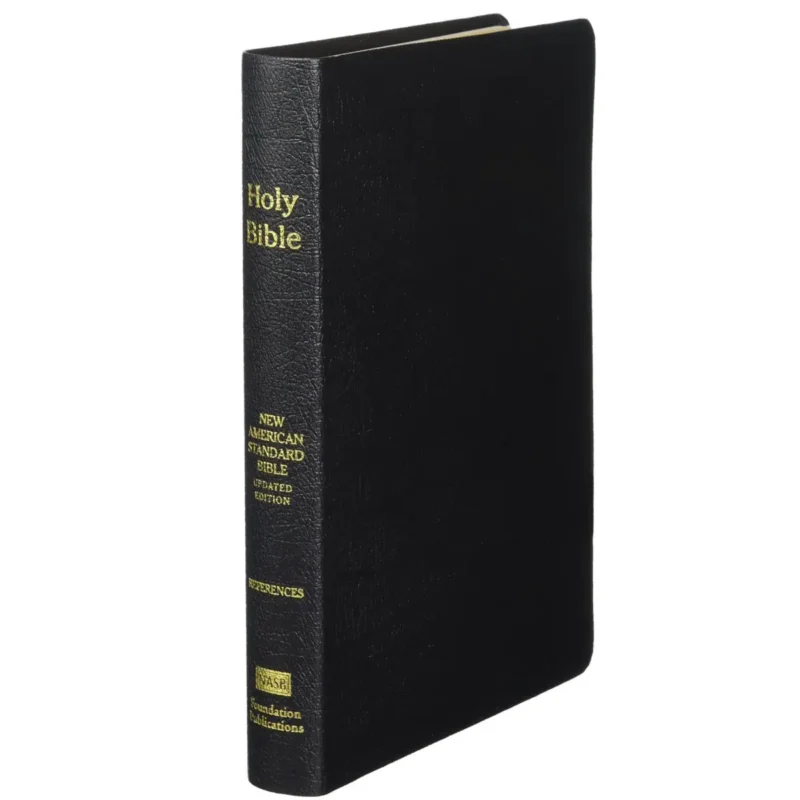The Bible is one of the most widely read and studied books in the world. It is a source of inspiration and guidance for millions of people. However, with so many different versions available, it can be difficult to know which one to choose. When it comes to accuracy, choosing the right version is crucial.

Accuracy is an essential factor when selecting a Bible version. The Bible is a complex and nuanced text, and even small differences in translation can have a significant impact on the meaning of a passage. A version that is not accurate can lead to confusion, misinterpretation, and even a distorted understanding of the text. Therefore, it is important to consider which version is the most accurate when choosing a Bible to read or study.
The Best Bible Versions for Accuracy
In this article, we will explore some of the best Bible versions for accuracy. We will analyze different translations and compare them to help you make an informed decision. Whether you are a seasoned Bible scholar or a new reader, this article will provide you with valuable insights into the most accurate Bible versions available today.
Understanding Translation Methods

Translating the Bible from its original languages of Hebrew, Greek, and Aramaic into modern languages is a complex process that requires careful consideration of the meaning of each word and phrase. There are several different methods that translators use to convey the meaning of the original texts in a way that is accurate and understandable to modern readers.
One common method is called formal equivalence, which aims to translate each word and phrase as closely as possible to the original text. This method is often used in more literal translations, such as the New American Standard Bible or the English Standard Version. While this approach can provide a high degree of accuracy, it can also result in awkward or difficult-to-understand phrasing.
Another method is called dynamic equivalence, which seeks to translate the meaning of each phrase in a way that is natural and easy to read. This approach is often used in more thought-for-thought translations, such as the New International Version or the New Living Translation. While this method can make the text more accessible to modern readers, it can also result in some loss of nuance or detail.
Finally, some translations use a combination of both formal and dynamic equivalence, seeking to balance accuracy with readability. Examples of translations that use this approach include the Christian Standard Bible and the New Revised Standard Version.
Ultimately, the choice of translation method depends on the goals of the translation and the needs of the reader. Some readers may prefer a more literal translation for in-depth study, while others may prefer a more readable translation for devotional reading. It is important to consider the strengths and weaknesses of each translation method when choosing a Bible version for accuracy.
Word-for-Word Translations
Word-for-word translations, also known as formal equivalence translations, are known for their accuracy in translating the original Hebrew and Greek texts of the Bible. These translations aim to provide a literal rendering of the original text, word-for-word, without any interpretation or paraphrasing. This approach is especially helpful for scholars and students who want to study the original text in-depth.
Some of the most popular word-for-word translations include the King James Version (KJV), the New American Standard Bible (NASB), and the English Standard Version (ESV). These translations are highly respected for their accuracy and are often used in seminaries and Bible colleges.
Word-for-word translations can be challenging to read for those who are not familiar with the original languages, as they can be more difficult to understand than other translations. However, they are a valuable resource for those who want to study the Bible in its original form.
One thing to keep in mind when choosing a word-for-word translation is that some translations may be more literal than others. For example, the KJV is known for its archaic language, which can make it difficult for modern readers to understand. On the other hand, the NASB and ESV are known for their accuracy and readability.
Overall, word-for-word translations are an excellent choice for those who want to study the Bible in-depth and gain a deeper understanding of the original text. While they may be more challenging to read, they provide a valuable resource for scholars, students, and anyone who wants to study the Bible in its original form.
Thought-for-Thought Translations

As the name suggests, thought-for-thought translations aim to convey the meaning of the original text in modern language. These translations are also known as dynamic equivalence or functional equivalence translations. They prioritize readability and clarity over word-for-word accuracy, which can sometimes result in a looser interpretation of the text.
Some popular thought-for-thought translations include:
- New International Version (NIV)
- New Living Translation (NLT)
- Contemporary English Version (CEV)
The NIV is one of the most widely used translations in the world and is known for its readability and accuracy. It was first published in 1978 and has undergone several revisions since then. The NLT, on the other hand, was first published in 1996 and is known for its easy-to-understand language. The CEV is a more recent translation, first published in 1995, and is aimed at readers who may struggle with more complex language.
Thought-for-thought translations can be helpful for readers who are new to the Bible or who may struggle with more complex language. However, it’s important to keep in mind that these translations may not always capture the full nuance of the original text. It’s always a good idea to consult multiple translations and to study the original language if possible.
Best Bible Versions for Accuracy
When it comes to choosing a Bible version for accuracy, there are a few that stand out above the rest. Here are some of the most accurate translations available:
- New American Standard Bible (NASB): This version is widely considered to be the most accurate English translation available. It uses a literal translation approach, meaning that it strives to translate the original Hebrew and Greek texts word-for-word.
- English Standard Version (ESV): The ESV is another highly accurate translation that uses a more formal equivalence approach, meaning that it seeks to translate the original text as accurately as possible while still maintaining readability in modern English.
- New Revised Standard Version (NRSV): The NRSV is a well-respected translation that uses a combination of formal and dynamic equivalence approaches. It is known for its accuracy and its inclusive language.
It’s important to note that no translation is perfect, and there will always be some degree of interpretation involved in the process. However, these translations have been carefully crafted by teams of scholars and are widely respected for their accuracy and fidelity to the original texts.
« What Does the Bible Say About Cremation? A Brief Exploration
tuesday pray »
When choosing a Bible version for accuracy, it’s also important to consider your own needs and preferences. Some translations may be more accessible or easier to read than others, and some may be better suited to specific study or devotional purposes.
Conclusion
Choosing the best Bible version for accuracy is a personal decision that can be influenced by many factors. In this article, we have explored six popular versions of the Bible and their features. Each of these versions has its unique strengths and weaknesses, and it is up to the reader to decide which one suits their needs best.
For those who prioritize a word-for-word translation, the ESV and NASB may be the best options. The NIV and NLT are great for those who prefer a thought-for-thought translation, while the Message and the NRSV are excellent for those who want a more contemporary and easy-to-read version.
It is important to note that no Bible version is perfect, and each translation has its limitations. However, with careful consideration, readers can find a version that accurately conveys the meaning of the original text and helps them deepen their understanding of the Bible.

Ultimately, the best Bible version for accuracy is the one that speaks to you personally and helps you connect with God’s word. We hope this article has provided you with the information you need to make an informed decision and enhance your Bible study experience.













:max_bytes(150000):strip_icc()/How-To-Clean-Books-1-7bec176f612c42dab35c1e96f95a4cde.jpg)


